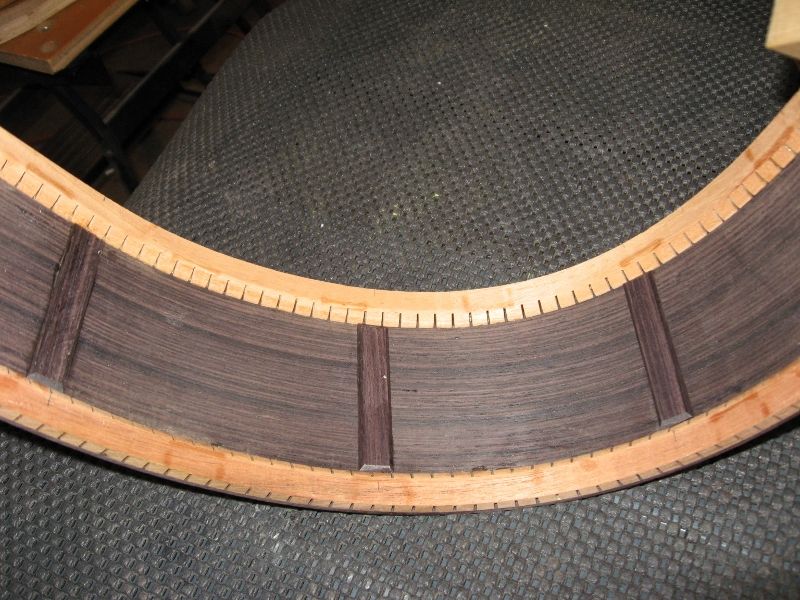
 |
|
#16
|
|||
|
|||
|
Quote:
__________________
gits: good and plenty chops: snickers |
|
#17
|
|||
|
|||
|
Quote:
There's tons of technical info. available describing various scenario's that lead to a point of failure. All that just to describe why a butt joint isn't the best idea. Okay, I'm not an engineer just a carpenter but I think I get the idea. Better to mortise/inlet or scarf join. Looking at the braces I went with I'm calling them scarf joined. I didn't know about the term stress riser but I do know enough not to butt join anything made from wood. SA |
|
#18
|
|||
|
|||
|
That's why you usually see the brace tapered to nothing at the joint. I think it's mostly an issue for cross-grain braces, but people seem to taper even for the braces mostly parallel to the grain (like the sound hole reinforcement).
__________________
gits: good and plenty chops: snickers |
|
#19
|
|||
|
|||
|
Quote:
|
|
#20
|
|||
|
|||
|
Quote:
A lot of builders do butt the side braces to the liners and seem to get away with it--most of the time. If they are already in (Pickinbob), I'd suggest tapering them down at their ends. Cavalier: hey, cool looking side braces! I'm wondering if lapping them over the liners the way you did will avoid the stress riser issue. If you have a close fitting joint where they overlap, I think you might avoid the problem. I'm not sure.
__________________
"Still a man hears what he wants to hear, and disregards the rest." --Paul Simon Last edited by Howard Klepper; 04-16-2013 at 01:12 PM. |
|
#21
|
|||
|
|||
|
Quote:
I have lapped the braces over the kerfing like KingCavalier, but I ran the braces much further. I made them the same thickness as the kerfing, and stopped them just short of the top or back. I use triangular kerfing, so the lapped braces automatically taper to nothing at the ends. |
|
#22
|
|||
|
|||
|
Quote:
I have to say it's never crossed my mind to install like this. I'll definately give it some consideration. My tail and neck blocks have been installed grain running up/down. |
|
#23
|
|||
|
|||
|
Thanks guys, I'm going to leave this one the way it is but going forward I think I'll make a change. I might even start to tuck my tone bars and finger braces as well.
|
|
#24
|
|||
|
|||
|
OK, so now I'm getting a little concerned. I was lead to believe in my training that beveling the ends of my side reinforcement strips where they meet the kerfing reduced any stress riser. Is that not correct and if not what is the consensus for the best side reinforcement strips configuration?

__________________
Tim B |
|
#25
|
|||
|
|||
|
Quote:
Jeff. Last edited by jeff crisp; 04-17-2013 at 07:51 AM. |